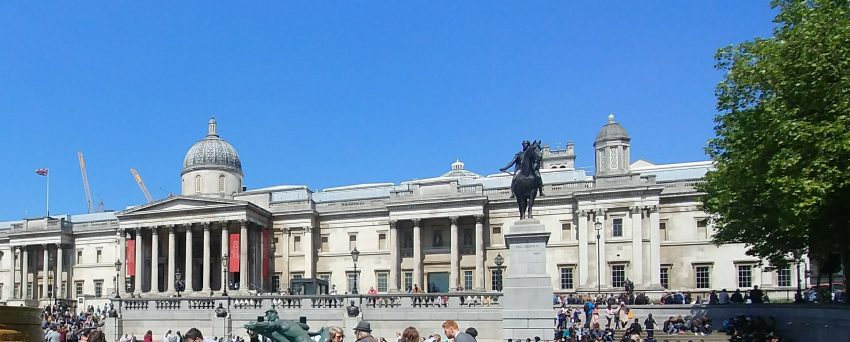A trip to the National Gallery in London is a must for art lovers. Paired with the National Portrait Gallery it offers a rich narrative of European art through the ages. It is home to the largest collection of Italian Renaissance painting outside of Italy, along with an excellent collection of Impressionist and Post-Impressionist paintings. Unlike most national galleries that were formed from the collections of royalty, the National Gallery in London has purchased or been bequeathed most of its 2300 pieces dating from the mid 13th century to 1900.
Located in Trafalgar Square, and easily accessible by bus or subway, the museum is free to visitors. There may be a small charge for special exhibits so you can decide if you want to attend those or not. Depending on how much of an art history buff you are allow at least a couple of hours for a good viewing.
Listed by age rather than preference, here are our top five works of art from the National Gallery.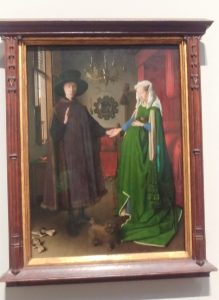
- Jan Van Eyck’s Arnolfini Portrait, 1434
Most likely commissioned as a wedding portrait by the affluent Arnolfini family, the painting is full of the disguised symbolism popularized by Northern Renaissance artists. Van Eyck is credited with first using oil to bind his pigment. The advantage of this method over tempura (which uses egg to bind) is that it took longer to dry, allowing the artist revise or fix anything and to insert a lot of detail, such in the carpet, fabric, fur and chandelier of this work. This very elaborate picture includes more than we can discuss here but is worth looking into before you see it in person the first time.
- Sandro Botticelli’s Venus and Mars, c1485
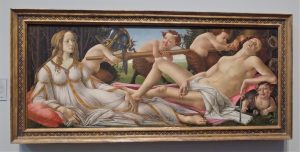
I am a huge fan of Botticelli and this painting is one of my favourites. The sated lover Mars falls into such a deep sleep that he is unaware of the baby satyrs playing by his side while the beautiful Venus looks on in exasperation. This is a wonderful allegory of the power of love over war. Probably painted as a wedding gift the shape of the painting would have fit over a bed or sofa. Also the choice of subject matter as in keeping with the Italian Renaissance use of characters from Roman mythology.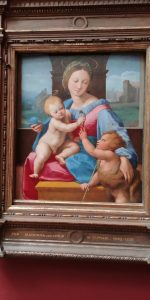
- Raphael’s The Aldobrandin Madonna, c1509-1510
This is one of a trio of Madonnas painted by Raphael during this time and was named after the family who commissioned his work. It is also sometimes referred to as the Garvagh Madonna after the last family to own the painting before being acquired by the National Gallery. Raphael depicts a tender family moment between mother, child and St. John the Baptist, recognizable even as a baby in animal skins and carrying a long cross.
- Johannes Vermeer’s Lady Standing at a Virginal, c1670-1672

One of many genre paintings by this Dutch Master it depicts a lovely young woman in her home welcoming the viewer to partake of her musical performance. It is said that Vermeer used his own daughters and his own home as the setting for many of his pictures. There is a twin to this painting, entitled Lady Seated at a Virginal, also an oil on canvas that was cut from the same bolt as the other.
- Vincent Van Gogh’s Sunflowers,1888
This is one of the five Sunflower paintings of Van Gogh’s currently on display. A common theme for him, the sunflowers were perfect for his use of bright colours. Van Gogh has become an accessible artist for many due to the immersive displays of his work that are travelling throughout Ontario at this time.
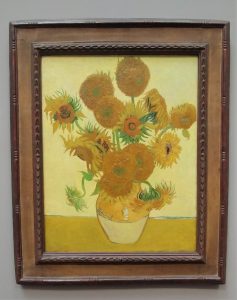
There are so many wonderful works in the National Gallery in London that I am sure you will find five of your favourites easily enough when you visit.
